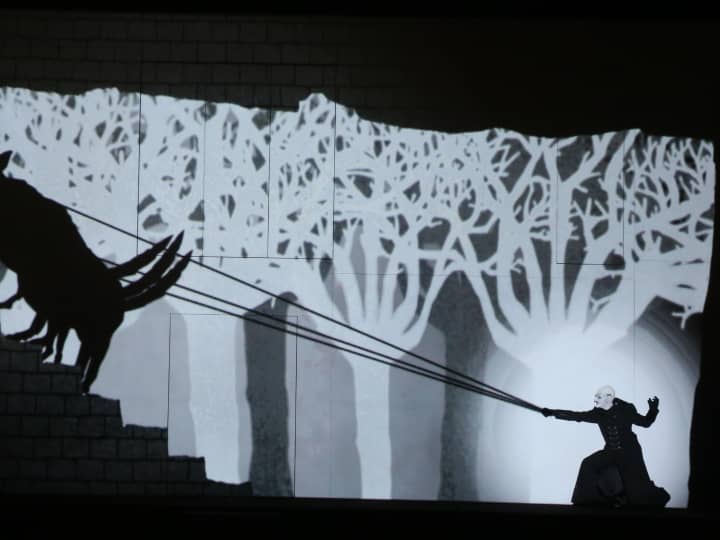There is usually a pretty standard way of rehearsing opera. The director has a concept for the production – a vision that has been in play with designers and production staff years ahead of the first rehearsal. When singers do arrive, they spend time with the director, reaching a compromise on character choices, and perfecting their knowledge of the music. Sometimes bits of music are cut out; other times bits of music are added. This whole process starts in rehearsal rooms then moves onto stage within a matter of weeks.
The rehearsal process for The Magic Flute is entirely different.
Why?
Our production of Mozart’s The Magic Flute is inspired by the silent film (and early “talkie”) era and is comprised entirely of projected film. Singers stand on stage or on platforms that are 9ft high off the ground, 18” in diameter, and attached to a giant wall. Animated video (in the style of Max Fleischer cartoons or the classic Disney “Skeleton Dance”) is projected onto the wall behind the singers. The singers cannot see what’s behind them, despite the fact that they interact with the animation projected (at one point an animated bird lands on Pamina’s hand).
In a regular opera, there’s some forgiveness, the orchestra, the staging, pretty much everything can adjust in real time. For this opera – there’s none of that.
The required precision means that all character decisions for the singer have already been made by the director (and there are no bits of music being added or taken out). As the film designs and animations are already set, there’s no room for compromise.
Singers also have an added job in rehearsal. They must learn highly choreographed movement that cannot be altered during a performance. If, for example, Monostatos is going to be pulling a dog’s leash at this point in the projection and at this point in the music, his hand has to be in that exact spot for it to look like he’s interacting with the animation. To hit their marks, singers practice with the set and projections as soon as possible, as opposed to only when they arrive on stage for tech rehearsals. They also must rehearse in the dark for the projections to be seen.
It’s not only the singers that are learning the show earlier in the process. The staging staff and crew are learning and planning for highly choreographed work. This show has one stage manager and three assistant stage managers (“ASMs”). The stage manager calls the majority of the 666 cues in the show from a secluded area front of house. That’s 2-3 times as many as there are in most other shows. And, unlike other shows, 25% of the cues are visual instead of the usual 5%. The stage manager must be able to see the projections and know the show well enough to call a cue on time or ahead of time to prepare cast and crew.
From the audience, it may look like just a wall on which video is projected, but there is so much more going on behind each of the doors to make the illusion work. ASMs are backstage and behind the wall, preparing cast and crew for their coordinated entrances and exits.
When they’re singing, the performer can’t see the bottom of the stage and they look like they’re floating. But before they emerge, each singer must be harnessed in. For every door turn, there are two crew members ready to assist with the harness, crank the doors open when projections are dark, and turn the singer onto the platform.
During rehearsal, the cast and crew practice this together and judiciously. While they interact during other shows, it’s a lot less choreographed.
By the time we open, the magic makes all this look effortless and quite normal. The Magic Flute is a highly complex production, but as with all art, the final product is so incredibly worth the hard work.








